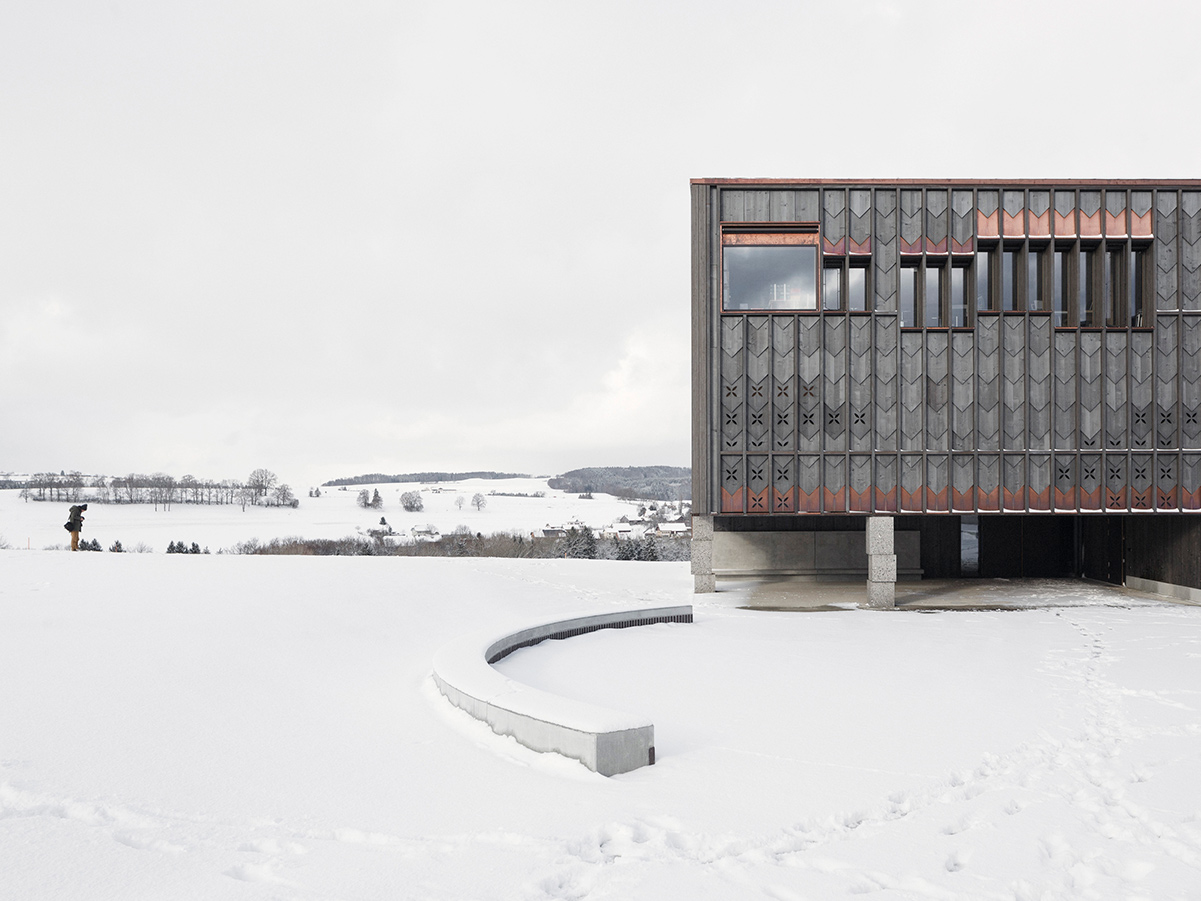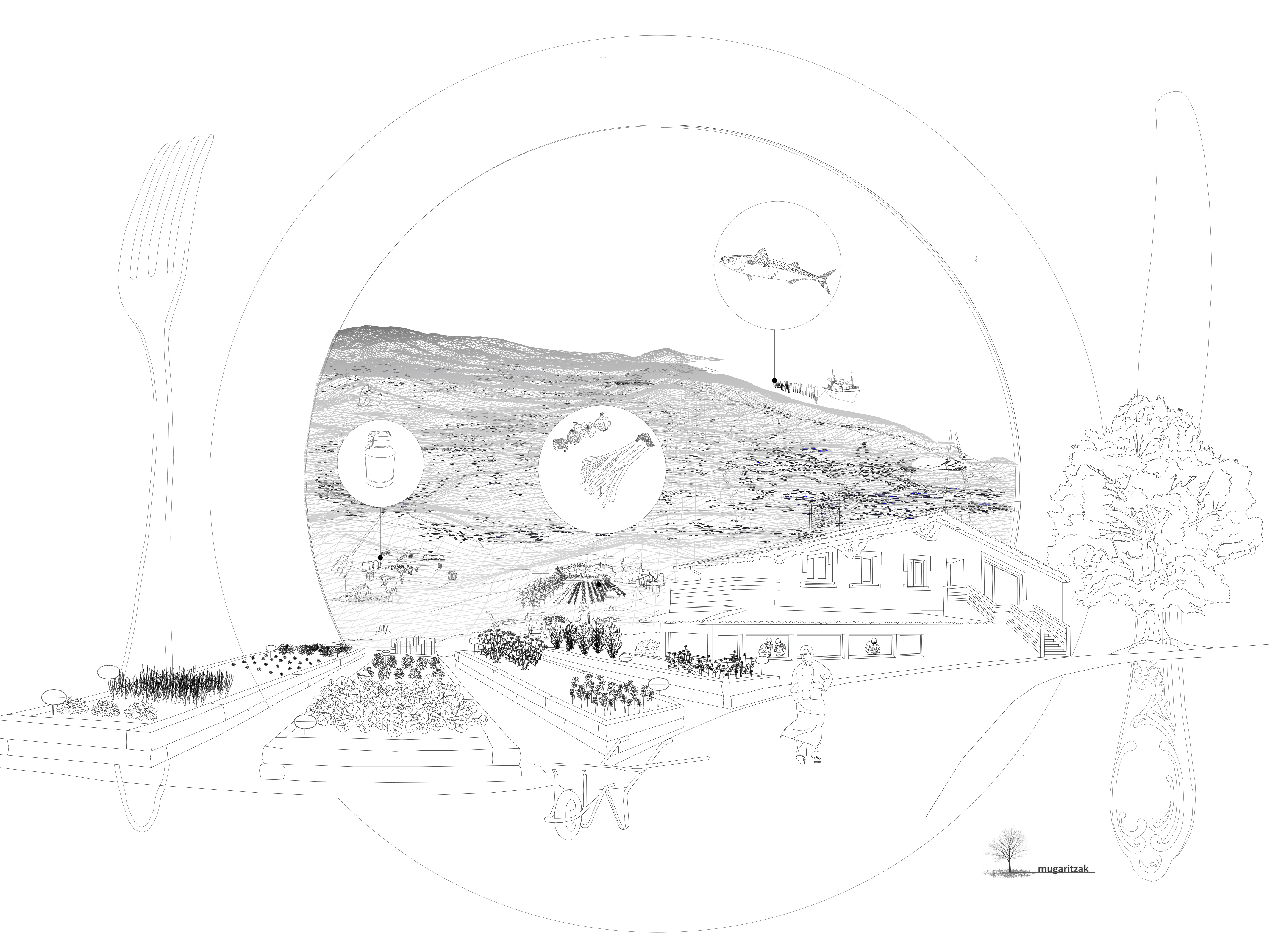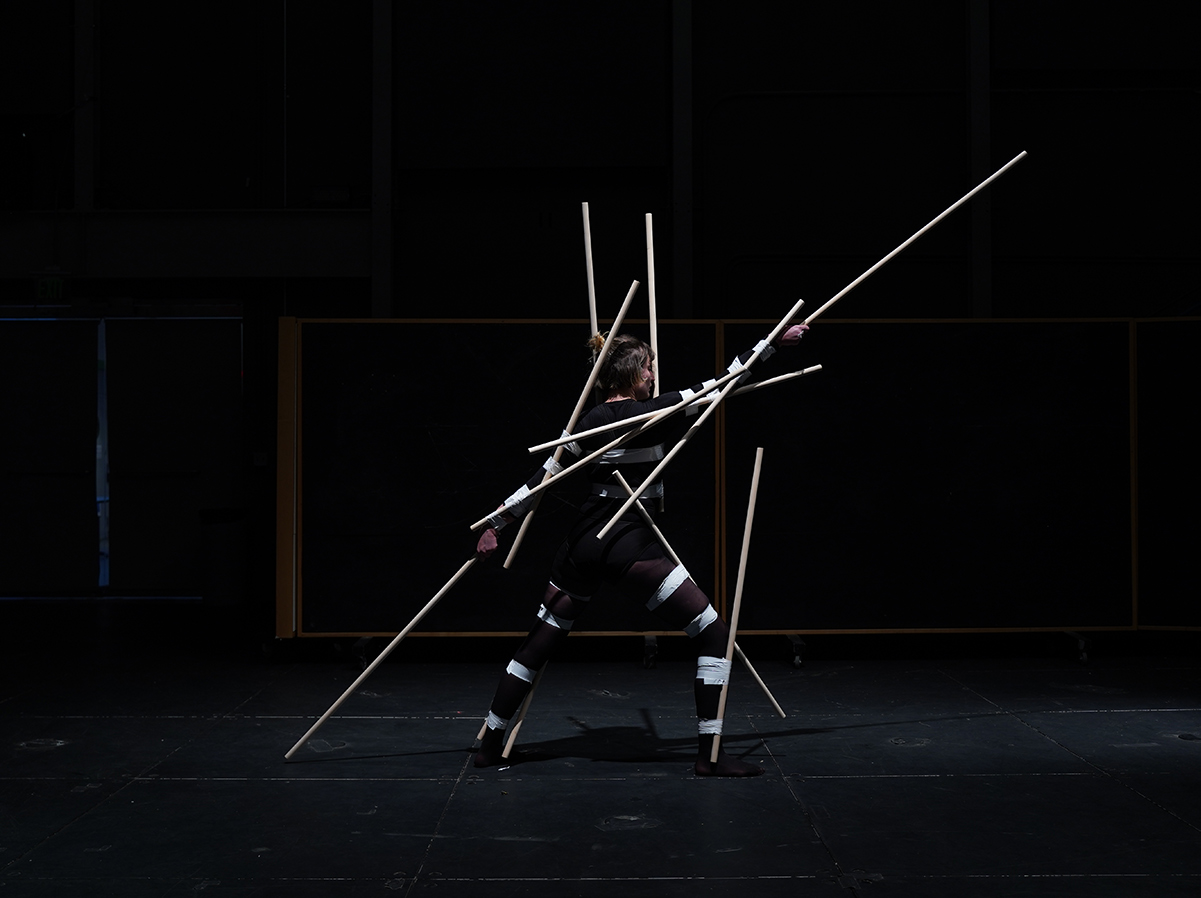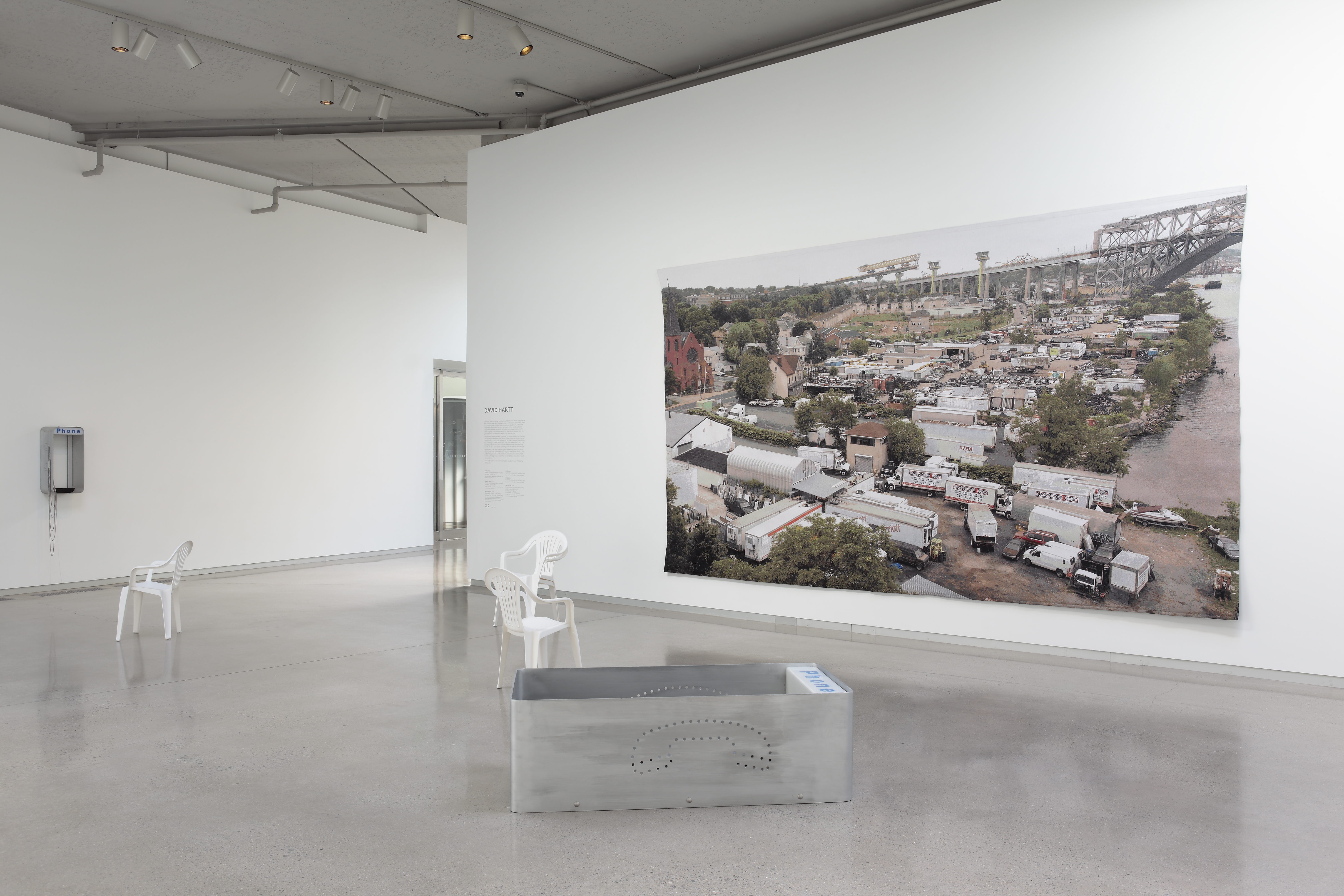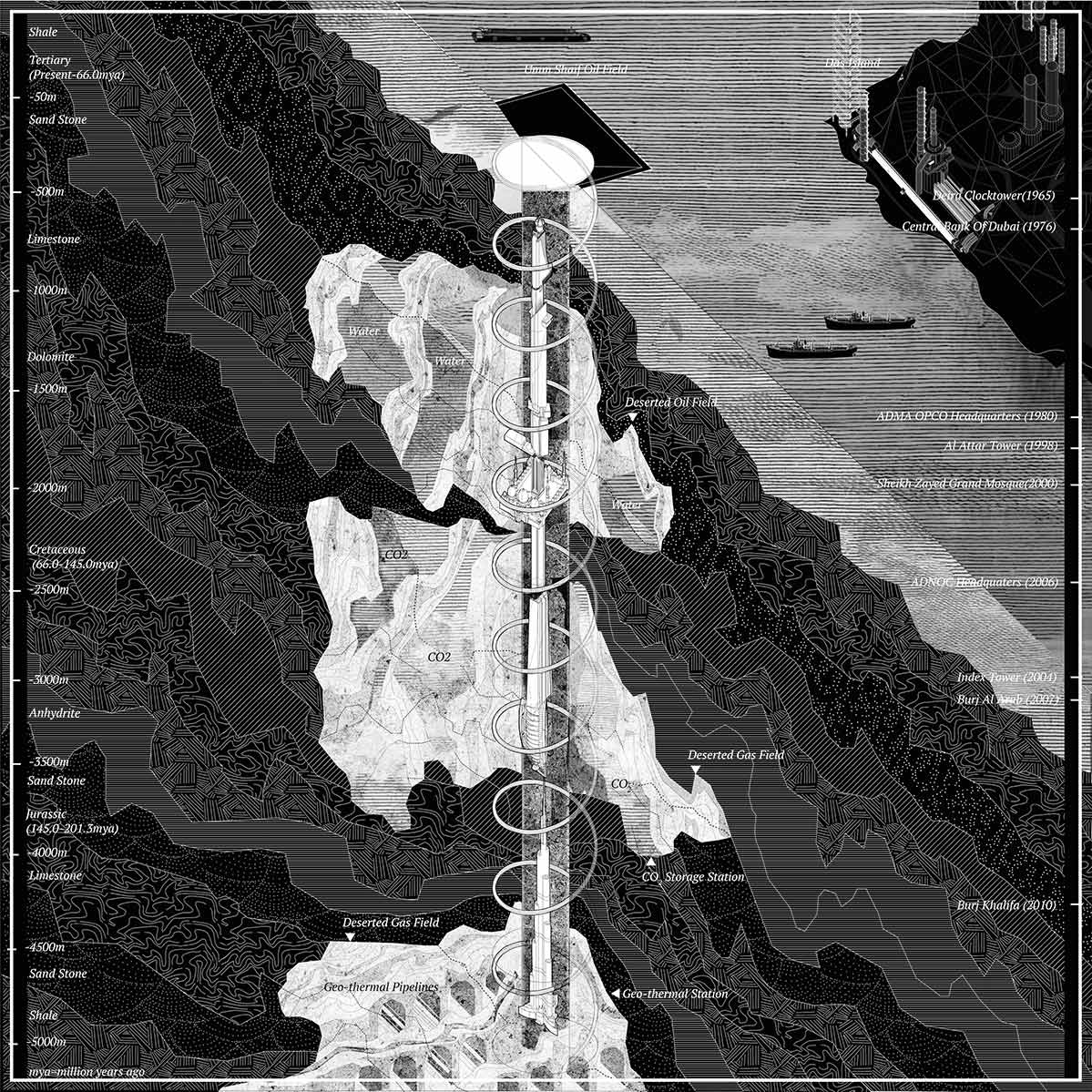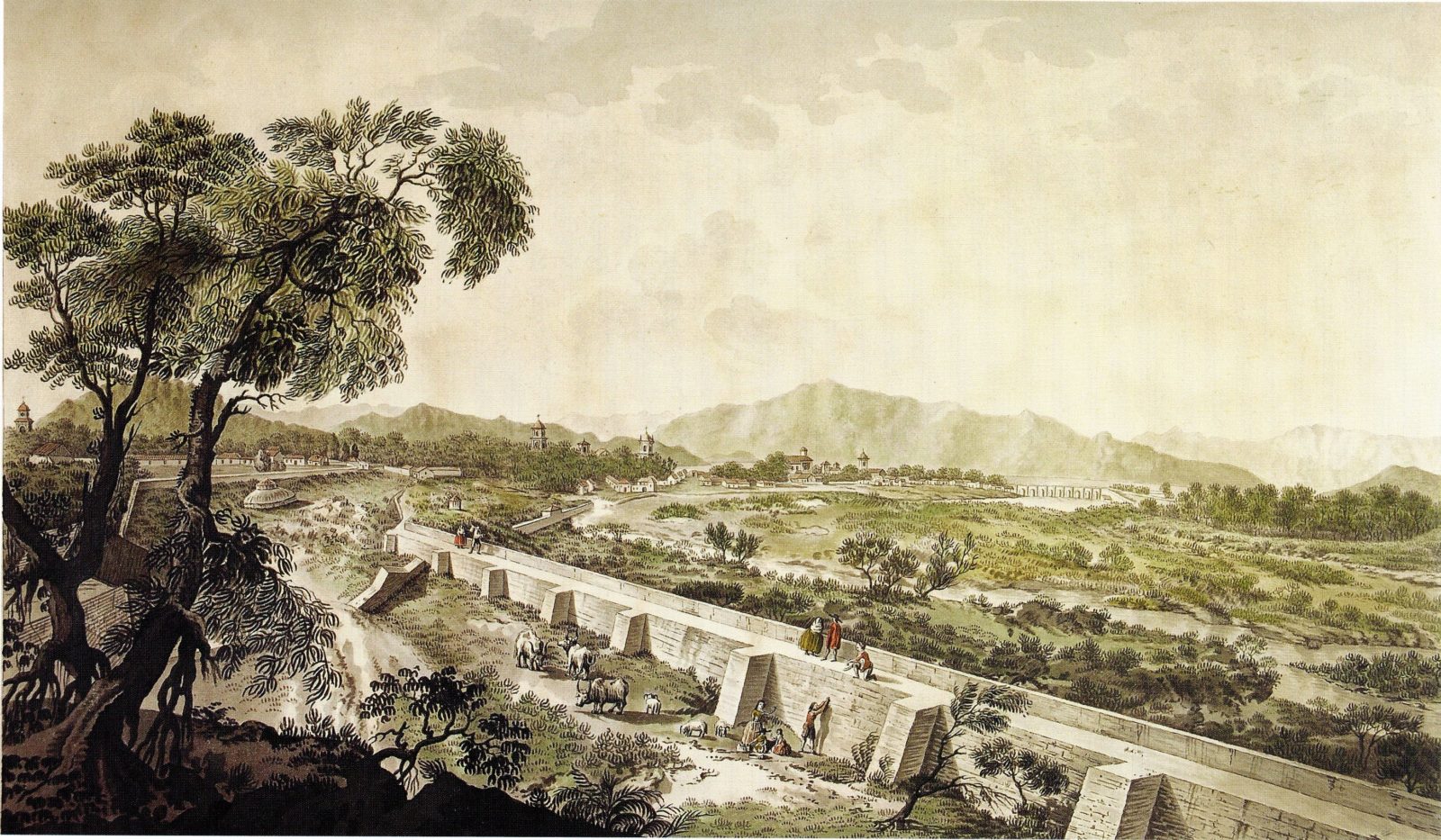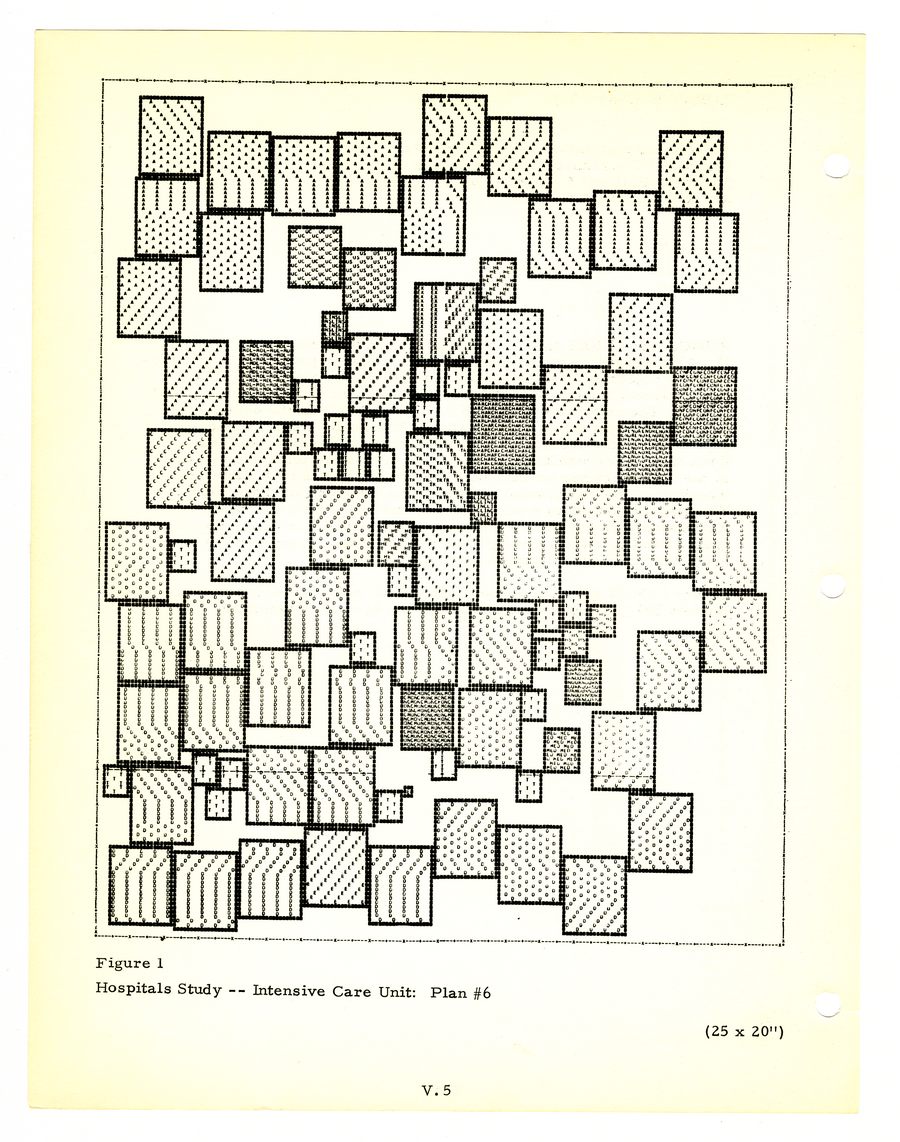TEd’A
“TEd’A arquitectes have revisited and evaluated sites and buildings, customs and memories, manufacturers, tradesmen and individuals involved in the local construction industry. A precise knowledge of the physical and lived heritage has become a conceptual lens through which their own thinking and behaviour, their analysis of phenomena worthy of being carried forward, has been focused. […] Their goal is the symbiotic relation between life and architecture, not architecture for its own sake.
TEd’A arquitectes transformed the local vernacular. […] Such transformed references, homages, reinterpretations are the architects’ hallmarks: evolution instead of revolution. […] Their power of imagination is applied to adapt precedents to a task at hand.
Alvaro Siza is right when he maintains that “architects don’t invent anything, they just transform reality”. The question is, in which direction is this transformation being taken? TEd’A arquitectes work suggests that reality can be transformed one building at a time, foregrounding authenticity instead of originality by paradigms rather than icons.”
Wang, Wilfried. “Transformations and Paradigms: On the Built Work of TEd’A arquitectes”. El Croquis. N.196 (II) TEd’A arquitectes 2010-2018
TEd’A arquitectes is tiny award-wining practice based in Mallorca, Spain.
Irene Pérez Piferrer (Barcelona, 1976) has an Architecture Degree from the Vallés School of Architecture (ETSAV-UPC, 2001). Jaume Mayol Amengual (Mallorca, 1976) has an Architecture Degree from the Vallés School of Architecture (ETSAV-UPC 2000) and a Ph. D. from the Catalonia Polytechnic University (UPC, 2010). They both also studied at the Rome Tre School (1999) and have two children: Aina and Biel.
TEd’A architects have been jury members and visiting lecturers at several international universities including Cornell University in Ithaca (New York), Accademia di Architettura di Mendrisio (Switzerland), Kingston School of Art (London), ETSA Madrid, Lund Universitet (Sweden), KTH Stockholm (Sweden), Architecture School, University College, Dublin (Ireland), Fakultät für Architektur TU, Munich (Germany), ETSA Barcelona and HEIA, Fribourg (Switzerland), amongst others. Jaume has taught at the Vallés School of Architecture (Barcelona), IE School (Madrid) and ETSALS (Barcelona). Irene Pérez and Jaume Mayol were Directors of one of the workshops at the Porto Academy in 2017 (Portugal). They are currenly teaching at the Fakultät für Architektur TU Graz (Austria).
The work of TEd’A arquitectes was exhibited in the Spanish Pavilion at the 2016 Venice Architecture Biennale 2016 (winner of the Golden Lion), the Catalan-Balearic Pavilion at the 2012 Venice Architecture Biennale, and the itinerant exhibition ‘Sensitive Matter: Young Catalan Architects, 2010-2012’, among others.
Montserrat Bonvehi Rosich
Kiley Fellow Lecture
Montserrat Bonvehi Rosich
Montserrat Bonvehi Rosich is a Lecturer of Landscape Architecture at the Graduate School of Design. She teaches in the Master of Landscape Architecture core studio sequence, the Ecology, Technology and Techniques sequence as well as design research seminars. Her research currently focuses on the relation between landscape ecology and the culture of food production in Northern Spain and Southern France.
Montserrat is a licensed Spanish Architect, Urban designer, and founder of TBR Architects, an award winning office focusing on the challenges and opportunities of designing public space. She was the 2017-2018 Daniel Urban Kiley Fellow in Landscape Architecture at the GSD. Prior to joining the GSD, she was faculty at the University of Virginia where she taught urban design, core sequence, and research studios as well as research seminars in the Department of Landscape Architecture. She holds a Master in Architecture from the Barcelona Architecture School at Polytechnic University of Catalonia where she also taught in the urban design department.
“Space, Movement, and the Technological Body: A Tribute to the Bauhaus”
“Space, Movement, and the Technological Body: A Tribute to the Bauhaus”
In celebration of the 100th anniversary of the Bauhaus School of Design, the GSD hosts a night of screenings and performances that explore new bodily and spatial interfaces, including movement-based performances by students developed in collaboration with a course taught by Krzysztof Wodiczko and Ani Liu. This event will also feature a brief introductory presentation by choreographer and dance scholar Debra McCall.
Debra McCall: Choreographer, movement analyst, dance scholar and preservationist, McCall reconstructed Oskar Schlemmer’s Bauhaus Dances from his original notes and sketches which she discovered in Stuttgart. Andreas Weininger, the last surviving Bauhaus performer, advised her in the reconstructions which premiered in 1982 at The Kitchen, in 1984 at the Solomon R. Guggenheim Museum, and toured nationally and internationally to critical acclaim, including the first Biennale de la Danse in Lyon. Her study of ancient Roman sculpture and pinakes informed Psyche’s Fourth Task, choreography based on the second century Metamorphoses of Apuleius, performed in fulfillment of an Advanced Design Fellowship at the American Academy in Rome in 1989. Most recently, she documented never-before-photographed ancient dance reliefs at the temple of Thillai Nataraja, Chidambaram, India as part of a Fulbright Professional and Academic Excellence Award. McCall is recipient of National Endowment for the Arts and National Endowment for the Humanities Fellowships and was a graduate faculty member of New York University and Pratt Institute where she was Mellon Lecturer. Director of the Movement Studies program of Art Therapy Italiana, Bologna, she is Senior Research Associate at the Institute of Movement Studies, New York City. McCall is founder of Performing Matters, an organization devoted to preserving endangered dance and bringing awareness to dancers at risk of censorship, arrest, or worse, for performing their art.
This event is organized in conjunction with the Harvard Art Museums and the exhibition The Bauhaus and Harvard. In tandem with the exhibition, Harvard Art Museums celebrates the Bauhaus across campus with activities, tours, workshops, film screenings and more. See the Harvard Art Museums website for the full lineup of programs.
David Hartt, “Urban Futures of the Recent Past”
Rouse Visiting Artist Lecture
David Hartt, “Urban Futures of the Recent Past”
This talk borrows the sub-title from Reyner Banham’s seminal book Megastructure, published in 1976. As a reference, Banham’s text critiques the failure of translating the energy and optimism of 60’s era civic projects into lasting institutions; thus creating fertile conditions for the seeds of our own post-ideological crisis to germinate in the capitalist restructuration of the mid 70’s. Hartt will focus on the relationship between the speculative and documentary aspects of his practice and, in particular, works that continue this narrative forward into our own age of fiction.
David Hartt (b. 1967, Montréal) lives and works in Philadelphia where he is an Assistant Professor, in the Department of Fine Arts at the University of Pennsylvania. His work explores how historic ideas and ideals persist or transform over time.
Recent solo exhibitions include in the forest at the Graham Foundation and My Building, Your Design: Seven Portraits by David Hartt at The Art Institute of Chicago. Additionally, his work has been included in several group exhibitions including Ocean of Images: New Photography 2015 at The Museum of Modern Art, America Is Hard to See at the Whitney Museum of American Art and Hedges, Edges, Dirt at the ICA in Richmond.
His work is in several public collections including The Museum of Modern Art, The Whitney Museum of American Art, The Art Institute of Chicago, The National Gallery of Canada and The Stedelijk Museum.
In 2018 Hartt was the recipient of both a Pew Fellowship and a Graham Foundation Fellowship, in 2015 he was awarded a Foundation for Contemporary Art Grant, in 2012 he was named a United States Artists Cruz Fellow and in 2011 he received a Louis Comfort Tiffany Foundation Award.
Hartt is represented by Corbett vs. Dempsey, Chicago, David Nolan Gallery, New York and Galerie Thomas Schulte, Berlin.
Rania Ghosn
Aga Khan Program Lecture
Rania Ghosn
Rania Ghosn DDes ’10 is Associate Professor of architecture and urbanism at MIT and founding partner of DESIGN EARTH with El Hadi Jazairy. Her research engages the geographies of technological systems to address the aesthetics and politics of the environment. The work of DESIGN EARTH has been exhibited internationally, including Venice Biennale (2018, 2016), Oslo Triennale (2017), Seoul Biennale (2017), Sharjah Biennale (2016), and MAAT (Lisbon, 2018), Sursock Museum (Beirut, 2016), Times Museum (Guangzhou, 2018) and collected by MoMA. Her honors include Architectural League Prize for Young Architects, Boghossian Foundation, and ACSA Faculty Design. Rania is co-author of
Geographies of Trash (2015) and
Geostories: Another Architecture for the Environment (2018), which has received support from the Graham Foundation
. She is founding editor of the
New Geographies journal and editor-in-chief of
NG 2: Landscapes of Energy (Harvard GSD, 2010). Rania holds a Bachelor of Architecture from American University of Beirut, a Master in Geography from University College London, and Doctor of Design from Harvard GSD.
This event is supported by the
Aga Khan Program at the GSD and is organized as part of the activities celebrating International Womxn’s Day 2019.
HECTOR (Jae Shin & Damon Rich)
HECTOR (Jae Shin & Damon Rich)
Hector is an urban design, planning & civic arts practice led by Jae Shin and Damon Rich. We work on designs for public places, neighborhood plans, and development regulations, trying to learn from traditions of popular education and community organizing to build collective understanding and action.
Jae Shin is a designer and partner at Hector. She recently served as an Enterprise Rose Architectural Fellow at the New York City Housing Authority (NYCHA), where she facilitated efforts to define and implement design principles for preserving and rehabilitating New York City’s public housing. She holds degrees in painting from Rhode Island School of Design and architecture from Princeton University. Her projects have received support from the MacDowell Colony and the National Endowment for the Arts, and she has led design studios at New Jersey Institute of Technology and the Harvard Graduate School of Design.
Damon Rich PP AICP LF ’07 is a designer, urban planner, and partner at Hector. He previously served as planning director and chief urban designer for the City of Newark and is the founder of the Center for Urban Pedagogy (CUP), an internationally recognized nonprofit organization that uses art and design to increase meaningful civic engagement. His work has been recognized by the MacArthur Fellowship, American Planning Association National Planning Award, the Cooper Hewitt National Design Award, the Loeb Fellowship in Advanced Environmental Studies at the Harvard University Graduate School of Design, the MacDowell Colony, and the United States Pavilion at the 11th International Architecture Exhibition in Venice.
Romy Hecht, “The Green Ideal: Botanical Practices and the Creation of Santiago’s Civic Landscape”
Romy Hecht, “The Green Ideal: Botanical Practices and the Creation of Santiago’s Civic Landscape”
Romy Hecht is a Professor at the School of Architecture, Pontificia Universidad Católica de Chile (PUC), where she gives courses and research seminars on historical narratives and design theories of nineteenth- and twentieth-century landscapes. She holds a Ph.D. in History and Theory of Architecture from Princeton University and an M. Arch and professional degree in architecture from the PUC. She has been a Visiting Professor in the Department of Landscape Architecture at the GSD (2012), in the Ph.D in Architecture program at the Universidad Nacional de Rosario in Argentina (2016) and in the Master in Architecture program at the Pontificia Universidad Católica de Lima (2017). She is also a former fellow at Dumbarton Oaks Research Library and Collection, Washington, D.C. (2015, 2017–2018).
As an author and recipient of National Grants and research fellowships, Hecht has developed a fundamental task in the studies of landscape architecture in Latin America. She has focused on constructing a comprehensive history of Chile’s landscape projects, particularly in post-independence Santiago, describing how landscape strategies have been shaped by a dynamic relationship between botanical practices, political decisions and economic circumstances giving form to an arboreal culture that has transformed the city.
Kuehn Malvezzi, “A HOUSE BETWEEN”
Kuehn Malvezzi, “A HOUSE BETWEEN”
Simona Malvezzi and Wilfried Kuehn will speak about their work with a focus on design strategies developed in collaboration with contemporary artists as well as on their current project House of One which will feature a synagogue, a church and a mosque in a novel type of building, soon to realized in the center of Berlin.
The work of Berlin-based architects Kuehn Malvezzi is characterized by collaborations with artists, curators and art institutions. From the design for Documenta 11 (Kassel, 2002) to the new building for the Insectarium in Montreal (construction to start this year), they have realized numerous interventions in museums and exhibition venues. Kuehn Malvezzi stands for an attitude that is interested in relations and a reflexive way of dealing with specific contexts. This curatorial approach to architecture is also fed by continuous theoretical investigation which is reflected in research and teaching, editing and writing. Their work has been featured in international solo and group exhibitions, including the 10th, 13th and 14th Architecture Biennial in Venice and Manifesta 7 in Trento. The practice participated in the 1st Chicago Architecture Biennial in 2015 and in the 2nd edition in 2017.
Kuehn Malvezzi’s House of One in Berlin was featured in Harvard Design Magazine’s 42nd issue, Run for Cover!
Janette Sadik-Khan, “Streetfight: Handbook for an Urban Revolution”
Janette Sadik-Khan, “Streetfight: Handbook for an Urban Revolution”
If you can change the street, you can change the world. Streetfight discusses the transformative power of streets and shows how reclaiming space for people to walk, bike and take public transportation sets cities on a path toward a more sustainable future.
Janette Sadik-Khan is one of the world’s foremost authorities on transportation and urban transformation. She served as New York City’s transportation commissioner from 2007 to 2013 under Mayor Michael Bloomberg, overseeing historic changes to the city’s streets—closing Broadway to cars in Times Square, building nearly 400 miles of bike lanes and seven rapid bus lines, launching the largest bike share program in North America and creating more than 60 plazas citywide. A founding principal with Bloomberg Associates, she works with mayors around the world to reimagine and redesign their cities. She chairs the National Association of Transportation Officials, implementing new, people-focused street design standards, including the Global Street Design Guide, which has been adopted by more than cities and organizations around the world. She is the author of Streetfight: Handbook for an Urban Revolution. Other Histories of the Digital
Cambridge Talks
Other Histories of the Digital
Cambridge Talks 2019
The historical narrative of digital architecture that has developed in the past two decades has been narrow in scope. Accounts have often focused on North American and European architects using personal computers and modeling software in schools and offices. Other Histories of the Digital aims to expand the discussion. What stories and methods come to the fore as we look at computation as a phenomenon with global reach, and which implicates many media and diverse forms of labor?
April 1
PhD Colloquium
2:30 – 5:30, Stubbins Room 112
Presentations of research by PhD students at the Graduate School of Design.
– Brandon Finn
– Demetra Vogiatzaki
– Jacobé Huet
– Matthew Allen
Keynote Lecture: “The Augmented Architect”
6:30 – 8:00, Piper Auditorium
– Michael Osman (UCLA), author of Modernism’s Visible Hand: Architecture and Regulation in America
April 2
Symposium Presentations (Stubbins 112)
Panel 1: Media
11:00 – 12:30, Stubbins Room 112
– Olga Touloumi (Bard)
– Theodora Vardouli (McGill)
– John May (Harvard)
-respondent: Andrew Holder (Harvard)
Media techniques, media infrastructures, media regimes: the many overlapping valences of “media” has made the term a favorite among historians seeking to reframe their subjects. At the same time, digital architecture involves one of today’s most ubiquitous mediators: the interactive computer. This poses a wicked problem for historians: potential directions of investigation tend to spiral outward, from mines of rare earth metals and factories producing chips, to corporate offices and management techniques, to manufacturing processes and software ecologies — the list goes on. Within such assemblages, buildings and their architects might begin to disappear as insignificant parts. One thing is certain: history is written differently when it is written from the perspective of media. What should be included in media histories of the digital? And what are the methods to use?
Lunch
Panel 2: Labor
1:30 – 3:00, Stubbins Room 112
– Sean Keller (IIT)
– Andrew Witt (Harvard)
– Daniel Cardoso Llach (Carnegie Mellon)
– respondent: TBD
Computation has often been understood as a threat to architecture in a very concrete way: optimizing workflows threatens to make architects obsolete. This has not happened, yet, but digital architecture has employed new forms of labor and redistributed power across the professional landscape. Offices now employ so-called “CAD monkeys” and “digital savants,” and “draftsman” is an anachronistic job description. Hierarchies have not disappeared, and yet authority sometimes consolidates in the hands of whomever “owns” the BIM file. Slick renderings of alluring forms might be all the more effective at occluding abhorrent working conditions than were their hand-drafted equivalents. Historians face their own conundrums in sorting out these issues. How can historians give voice to the voiceless? Where do we find the evidence of practices and thoughts so common as to be left unrecorded?
Roundtable Discussion
3:30 – 5:00, Stubbins Room 112
– moderated by Antoine Picon (Harvard)
Cambridge Talks 2019 is generously supported by the History and Theory Platform and the Advanced Studies Program at the Harvard University Graduate School of Design. Organized by Matthew Allen, Phillip Denny, and Christina Shivers.
